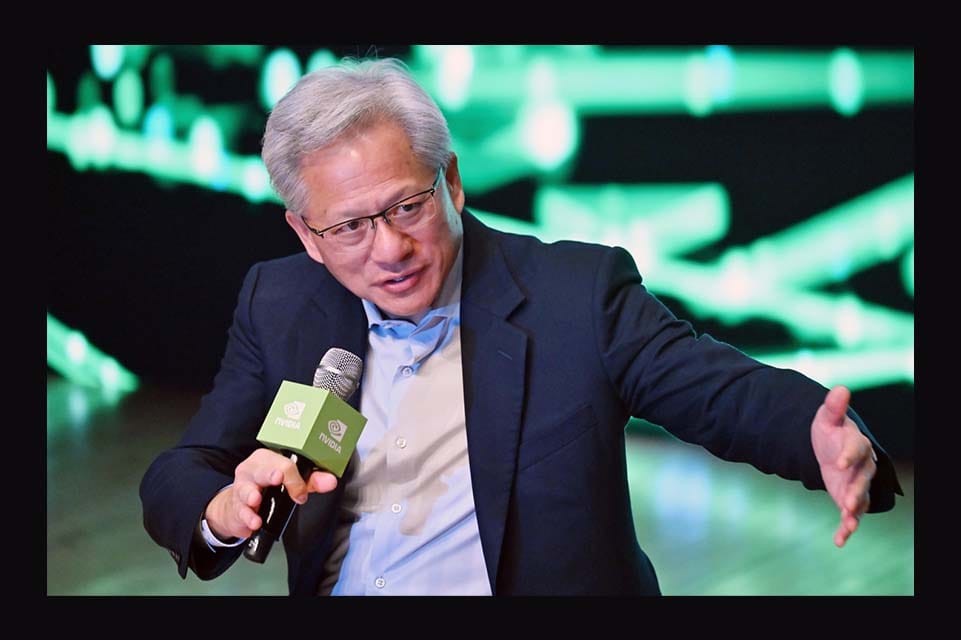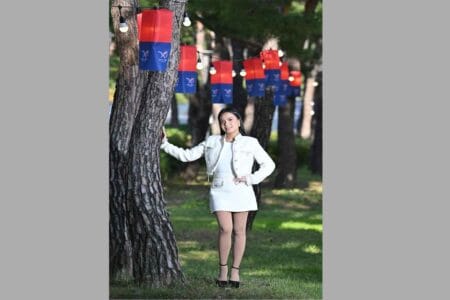November 3, 2025
SEOUL – South Korea’s plan to secure 260,000 of Nvidia’s latest Blackwell AI chips, in a deal worth up to $10 billion, marks one of its boldest steps yet to build world-class artificial intelligence infrastructure. But beyond the record figure, the deal underscores both Korea’s rising AI ambitions and the challenges ahead.
Announced during Nvidia CEO Jensen Huang’s visit to Gyeongju, North Gyeongsang Province, for the APEC summit, the agreement represents one of the largest GPU allocations ever made to a single country. The rollout will lift Korea’s AI chip stock from about 65,000 to more than 300,000 units — far exceeding the government’s original goal of 45,000.
“In a closed-door meeting, Huang said the US has about 20 million GPUs, the most in the world, followed by China. Korea’s total of 300,000 now puts it in third place globally,” said Ha Jung-woo, presidential secretary for AI and future planning. “If you look at it realistically, Korea is now competing for third place in compute capacity.”
The landmark deal has been welcomed across Korea’s tech scene as a breakthrough after a yearslong shortage. “Securing 260,000 GPUs is a globally competitive scale — comparable to Meta’s 300,000 and Elon Musk’s 100,000,” said Kim Sung-hoon, CEO of AI startup Upstage. “It’s a first step toward AI sovereignty and global leadership.”
Bae Soon-min, chief responsible AI officer at KT, added, “At APEC, we saw true unity through AI technology. As the wave of physical AI rises beyond agentic AI, this kind of bold investment deserves full support.”
GPUs, once used mainly for gaming graphics, have become the essential engines of generative AI, powering massive models trained on vast datasets. Amid the global AI boom, Nvidia commands a 92 percent share of the data-center GPU market, according to IoT Analytics, while rivals AMD, Broadcom and Intel lag far behind.
With each AI GPU commanding a price tag of up to 100 million won ($70,000), supply remains tight as OpenAI, Google and other tech giants snap up production. Korea’s allocation ensures domestic researchers, startups and corporations can access high-end compute without relying on foreign cloud platforms.
Of the 260,000 GPUs in the deal, 50,000 will go to the planned National AI Computing Center, a state-led facility to support universities and startups. “The center will train large-scale language models and facilitate research across sectors,” Ha said.
He emphasized that the deal represents “seed infrastructure” for Korea’s broader industrial transformation. “With this computing power, Korea can create AI that becomes the core technology for real industries — from robotics and mobility to manufacturing, shipbuilding and culture.”
The remaining GPUs will be split among Samsung Electronics, SK Group, Hyundai Motor Group and Naver Cloud to build “AI factories” — advanced data centers designed to train models and power digital twins that boost chip yields, factory efficiency and autonomous driving. Naver alone plans to install 60,000 GPUs.
For Nvidia, the deal deepens its strategic reliance on Korea’s industrial base.
“Korea is one of the few countries with the energy capacity, land and ecosystem to host hyperscale AI infrastructure — and the only government that has directly purchased AI chips for national R&D,” Huang said.
Samsung Electronics and SK hynix, suppliers of the high-bandwidth memory crucial to Nvidia’s GPUs, are expected to benefit directly. Each Blackwell unit can include up to eight stacks of HBM3E — equating to more than 2 million HBM modules likely to be produced by the two firms.
Huang even joked about future collaboration, saying he hopes to create “HBM4, HBM5, all the way to HBM97” with Samsung and SK hynix, highlighting Korea’s importance in Nvidia’s supply chain.
The GPU rollout, set to begin next year and continue through 2030, will make Korea one of the world’s most compute-dense nations. But such vast data centers will also require enormous electricity and water supply for cooling — posing new strains on a country already facing energy security and environmental challenges.
“The question now is not only whether Korea can build enough compute, but whether it can sustain it,” one industry analyst said. Nvidia’s Asia-Pacific head Raymond Teh acknowledged the issue, saying the company is working closely with Korean authorities to address the energy challenge.
As the global AI race accelerates, Korea’s bet on 260,000 Blackwell GPUs marks both a technological leap and a test of endurance — whether it can convert raw computing power into lasting, sovereign AI strength.







